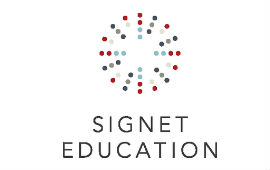The ACT’s changes and what they mean for test takers

By Jay Bacrania
What changed?
In early June, the ACT announced that it will be making minor changes to its popular college admissions exam starting in 2015. Mostly, the changes concern ACT’s score reporting and its writing section and do not involve much extra work for test-takers. In particular, the ACT will begin providing four additional sub scores that measure a student’s performance across its English, reading, math and science sections. They include:
- A STEM (science, technology, engineering, and mathematics) score that assesses overall performance in science and math.
- A Progress Toward Career Readiness Indicator that reflects key workplace skills.
- An English Language Arts Score that will combine performance across the English, reading and writing sections of the exam.
- A Text Complexity Progress Indicator that will measure students’ readiness for college-and career-level exams.
The other major change comes in the optional writing section, which will change from being an open-ended, opinion-based essay prompt, to an assignment that “measures students’ ability to evaluate multiple perspectives on a complex issue” (ACT). Another change to the essay comes in its scoring, which will be based on four dimensions: ideas and analysis, development and support, organization and language use. Sub scores will be reported for each dimension.
What does this mean for students?
The bottom line is that the changes to the ACT will not affect students’ preparation or test-taking experience outside of the optional writing section. The test itself is mostly staying the same; all that’s changing is how the ACT processes and presents students’ scores. For those who plan to take the writing section, we recommend that students take it when possible; new practice materials will be released in late summer 2014.
So, why make changes at all?
It’s all about market share. The ACT and the SAT want to provide relevant information to colleges; the more useful colleges find the test, the more popular the tests will be among test-takers. And that means more money for the test makers. Currently, nearly all US colleges have begun accepting both tests without preference, and in 2012, the ACT registered more test takers than did the SAT for the first time in history. This seems to have spooked the SAT, and this loss of market share is probably the biggest factor influencing the proposed changes to the SAT, which were announced earlier this spring and will take effect in 2016.
The SAT is being redesigned from the ground up, and these changes seem to bring it more in line with and thus validate the ACT’s philosophy of measuring achievement by testing content closely tied to high school curricula. The SAT’s philosophy has long been to measure aptitude by testing abstract reasoning and problem-solving skills.
Predictably, the ACT hasn’t missed its opportunity to dig at the SAT for this. In a masterful marketing strategy that suggests the ACT has always been a better measure of student achievement, the ACT emphasizes that the new test will not create extra work or stress for students and that colleges will already know exactly how to interpret their new scores. At the same time, the ACT implies that the new SAT is creating unnecessary anxiety for students and parents and that colleges will not immediately know how to use the new SAT scoring format.
Overall, I think the ACT vs. SAT battle for student and college market share may be a good thing on a larger scale. The competition between tests is already spurring improvements to both. It’s my hope that the competition, along with pressure from holistic admissions offices and thoughtful policymakers, will lead to a more effective college-readiness assessment and application process.
Jay Bacrania is the CEO of Signet Education, which has locations in Cambridge and New York City. Signet Education provides academic mentorship through subject tutoring, test preparation, organizational coaching and admissions consulting services.

